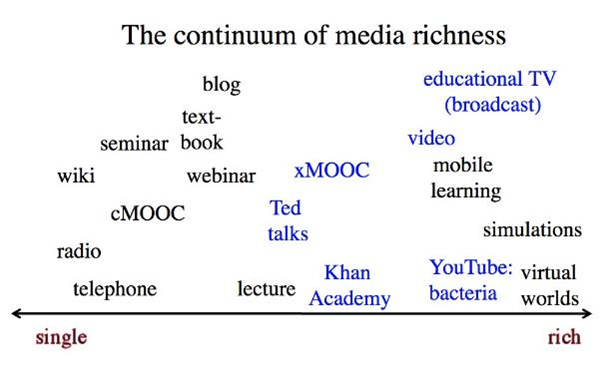Lesson 3 - Implementing Online Learning
9. Media Richness
9.2. The Continuum of Media Richness

Once again then there is a continuum in terms of media richness, as illustrated in Figure 14 above. Also, once again, design of a particular medium can influence where on the continuum it would be placed. For instance, in Figure 14, different forms of teaching using video are represented in blue. Ted Talks, a televised lecture, and often xMOOCs are usually mainly talking heads. The Khan Academy uses dynamic graphics as well as voice-over commentary, and MrExham’s
However, although the richness of video can be increased or decreased by the way it is used, video is always going to be richer in media terms than radio or textbooks. Radio is never going to be a rich medium in terms of its symbols systems because it depends on a single medium, audio, and even talking head video is richer symbolically than radio.
There is no normative or evaluative judgment here. Radio can be ‘rich’ in the sense of fully exploiting the characteristics or symbol systems of the medium. A well-produced radio program is more likely to be educationally effective than a badly produced video. But in terms of representation of knowledge, the possibilities of radio in terms of media richness will always be less than the possibilities of video.